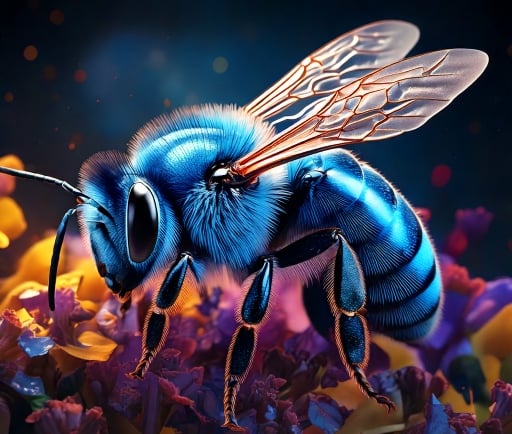The Fascinating Life of the Blue Carpenter Bee


Introduction to the Blue Carpenter Bee
The blue carpenter bee, known for its distinct size and striking color, can be found throughout Southeast Asia, India, and southern China. These bees stand out due to their robust physique and vibrant blue hue, making them a subject of interest among entomologists and nature enthusiasts alike. Understanding their habitat, lifestyle, and role in the ecosystem is essential to appreciating these remarkable creatures.
Habitat and Distribution
Blue carpenter bees thrive in a variety of environments, ranging from tropical forests to gardens and agricultural areas. Their widespread presence across Southeast Asia is a testament to their adaptability. Unlike many other bee species, these bees prefer to nest in wood and plant materials, which allows them to create burrows that serve as their homes. This behavior not only provides them with shelter but also aids in pollination, as they often frequent flowering plants in their search for nectar.
Behavior and Ecology
Large and heavy, blue carpenter bees exhibit unique behavior patterns that differentiate them from other bees. For instance, they are solitary creatures, predominantly living alone rather than in hives. This solitary behavior influences their nesting habits, as they dig tunnels in the wood to lay their eggs and nurture their offspring. Female blue carpenter bees are responsible for gathering pollen and nectar, which they use to create food provisions for their larvae.
The role of blue carpenter bees in the ecosystem extends beyond nesting; they are crucial pollinators. Their large bodies allow them to carry significant amounts of pollen, making them efficient at transferring pollen from flower to flower. This activity not only supports the reproductive cycle of various plants but also contributes to the overall health of the ecosystem by maintaining biodiversity.
As these bees forage for food, they also engage in what is known as buzz pollination, a technique that increases the efficiency of pollen transfer. This process is particularly beneficial for certain plants that rely on vibration to release pollen, highlighting the importance of blue carpenter bees in agricultural sustenance.
Conservation and Challenges
Despite their impressive adaptability, blue carpenter bees face numerous challenges in their natural habitats. Urbanization, habitat destruction, and pesticide use are significant threats that can lead to a decline in their populations. Protecting these bees is crucial, not only for their survival but also for preserving the balance of our ecosystems. Conservation efforts, such as creating bee-friendly gardens and minimizing the use of harmful chemicals, can greatly impact their wellbeing.
In conclusion, the blue carpenter bee is a vital component of the environments they inhabit across Southeast Asia, India, and southern China. Their unique characteristics, behaviors, and ecological contributions make them fascinating subjects of study and vital agents of pollination. Preserving their habitats and ensuring their survival should be a priority for all who appreciate the intricate balance of nature.
